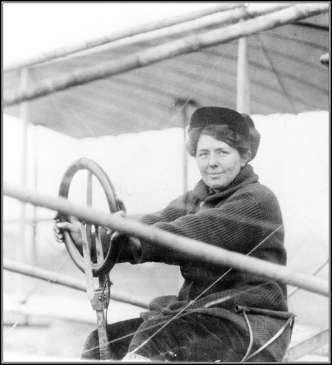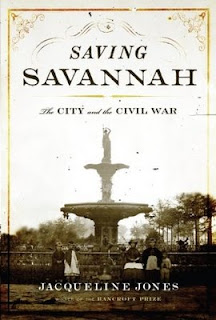 This week has been full of news on the immigration detention front. In a disappointing move, last Friday, the Obama administration rejected a call to make legally enforceable rules ensuring minimum standards in immigration detention. On Tuesday, the Inter-American Commission on Human Rights (IACHR) issued a press release reporting on the Rapporteurship on the Rights of Migrant Workers and their Families' visit last week to immigration detention facilities in Arizona and Texas. That same day, the National Immigration Law Center, the ACLU of Southern California, and Holland & Knight released a 170-page report on rights violations in U.S. immigration detention centers. Yesterday, Senators Robert Menendez (pictured below right) and Kirsten Gillibrand (pictured below left) unveiled two new bills that aim to reform the immigration detention system, a fix that is long overdue. While the text of the bills is not yet available, and while any step to improve the disaster that is our immigration detention system is to be applauded, the bills fall short of addressing fundamental human rights violations identified by the IACHR.
This week has been full of news on the immigration detention front. In a disappointing move, last Friday, the Obama administration rejected a call to make legally enforceable rules ensuring minimum standards in immigration detention. On Tuesday, the Inter-American Commission on Human Rights (IACHR) issued a press release reporting on the Rapporteurship on the Rights of Migrant Workers and their Families' visit last week to immigration detention facilities in Arizona and Texas. That same day, the National Immigration Law Center, the ACLU of Southern California, and Holland & Knight released a 170-page report on rights violations in U.S. immigration detention centers. Yesterday, Senators Robert Menendez (pictured below right) and Kirsten Gillibrand (pictured below left) unveiled two new bills that aim to reform the immigration detention system, a fix that is long overdue. While the text of the bills is not yet available, and while any step to improve the disaster that is our immigration detention system is to be applauded, the bills fall short of addressing fundamental human rights violations identified by the IACHR.The IACHR discusses the myriad problems raised by the Department of Homeland Security (DHS)'s policy of outsourcing detention to state, local, and private prison facilities. Often, as a pork barrel job-creation strategy, these facilities are located in rural areas, far from pro bono lawyers and support networks. The Rapporteurship's central concern with this subcontracting is that the consequent failure of accountability creates severe obstacles to ensuring that basic human rights are met. As a striking example of this problem, Maricopa County Sheriff Joe Arpaio (profiled here in last week's New Yorker) refused to allow the IACHR to visit immigration detention facilities, raising serious doubts about federal government's ability to hold local law enforcement accountable for violating fundamental human rights.
The Rapporteurship focuses on the impact of immigration detention on vulnerable populations -- asylum seekers and children, particularly unaccompanied minors. It notes the need to improve the process for identifying unaccompanied minors for claims of asylum, human trafficking, and other abuses. Moreover, the IACHR decries the broad use of detention for asylum seekers and their accompanying minor children, emphasizing the harsh psychological impact of this policy. Finally, it underlines the need to ensure pro bono counsel for unaccompanied minors.
The bills unveiled this week, the Protect Citizens and Residents from Unlawful Detention Act and the Strong Safe Treatment, Avoiding Needless Deaths, and Abuse Reduction in the
 Detention System (STANDARDS) Act, appear to address some, but not all, of these serious problems. Most importantly, the bills aim to improve standards within existing detention sites rather than ending the outsourcing of immigration detention. Again, I've not seen the text of these bills, but it appears that they don't address the needs of asylum seekers and trafficked children, nor do they call for an end to family detention and the detention of children.
Detention System (STANDARDS) Act, appear to address some, but not all, of these serious problems. Most importantly, the bills aim to improve standards within existing detention sites rather than ending the outsourcing of immigration detention. Again, I've not seen the text of these bills, but it appears that they don't address the needs of asylum seekers and trafficked children, nor do they call for an end to family detention and the detention of children.The bills require detention facilities to be located where free or low-cost legal representation is available; it's not clear whether this provision would require DHS to end outsourcing to prisons in rural locations. In addition, the bills "restrict" transfers of immigration detainees that would impair an attorney-cl
 ient relationship, addressing a particularly pernicious practice by DHS.
ient relationship, addressing a particularly pernicious practice by DHS.Stopping short of prohibiting detention of "vulnerable populations" (pregnant women, nursing mothers, people with serious health conditions) entirely, the first bill would require a decision on detention by DHS within 72 hours as well as appeal to an immigration judge. In a similar vein, rather than imposing strict limits on the detention of children and vulnerable individuals, the bills require that detention facilities accommodate the "unique needs" of these populations. That includes eliminating the use of solitary confinement and strip searches on children (!), a policy that one would hope would already be in place.
The second bill addresses basic human rights of immigrant detainees, including ensuring fundamental medical and mental health care; providing translation and legal information; allowing family, legal, and religious visitors and access to recreation; and preventing of physical and sexual abuse. The bill would require DHS to enforce these standards, including through a Detention Commission that would investigate facilities and report to Congress, but there's no sign that the law would authorize a private right of action to ensure that these standards are upheld. It's a shame that the Obama administration has refused to take that step towards accountability itself.
In short, it's a sign of progress to have serious and sustained attention paid to the human rights violations perpetrated in immigration detention, but we're still a long way from meeting international human rights standards when it comes to detained immigrants.



























 Much ink has been spilt attempting to identify the distinction between torture stricto sensu, which is punishable under
Much ink has been spilt attempting to identify the distinction between torture stricto sensu, which is punishable under 













